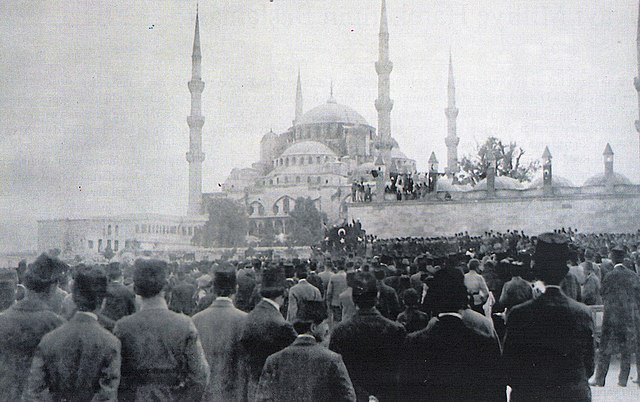The Şehzadebaşı raid was a British Indian Army operation to capture a Ottoman Army barracks in Istanbul which took place as part of a larger operation by the Allied occupational authorities to counter the Turkish National Movement. Since Allied forces had begun the occupation of Istanbul in November 1918 in accordance with the Armistice of Mudros, Turkish resistance to the occupation was gradually increasing. On 16 March 1920, the Allies launched a raid which arrested several nationalist politicians and journalists along with occupying military and police installations and government buildings.
Photograph of an Ottoman soldier killed during the raid
The occupation of Istanbul or occupation of Constantinople, the capital of the Ottoman Empire, by British, French, Italian, and Greek forces, took place in accordance with the Armistice of Mudros, which ended Ottoman participation in the First World War. The first French troops entered the city on 12 November 1918, followed by British troops the next day. The Italian troops landed in Galata on 7 February 1919.
Louis Franchet d'Espèrey marching in Beyoğlu, 8 February 1919
Greek aviators at the San Stefano airfield, after the Mudros armistice
The armored cruiser Averof of the Greek Navy in the Bosphorus, 1919
Constantinople, 23 May 1919: Protests against the Occupation of Smyrna by the Kingdom of Greece





